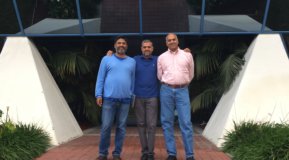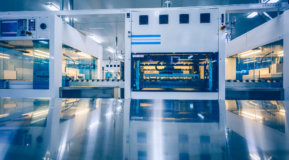One of the most important items a mobility engineer needs to have access to is a high quality lab environment. Our technology is changing so rapidly that we should be spending at least 10% of our time in the lab every week. A quality lab allows you to try new code and features without risking impacting client devices. What I'm going to show you is what I consider the best setup you could possibly have, but this setup is easily configurable for your needs.
Define Your Goals
The first step in building a lab is defining your goals, just like a typical customer discovery meeting! During this process you need to determine what is it that you want to be able to test or lab. For me I wanted to be able to test all possible scenarios of the ACMX so this requires me to have a more robust setup than most. If your goals are to simply be able to test new code your setup will be a simple single controller/AP and/or an IAP.
The Grand Design
Like I said my goal was to create a lab that will work for the ACMX preparation so my setup consists of the following hardware: 4 x 7005 Controller, 2 x AP335, 3 x AP205, 3 x AS100, 1 x IAP325, and 2 x IAP225. Now you might look at that list and think to yourself that is a lot of gear to acquire, well it is, but it also allows me to simultaneously test all scenarios. I've setup my 7005's as the Conductor with a high availability pair of locals. The 4th 7005 is my code test controller, allowing me to run newer code than what is on the exams. The 2 AP335's connect to the 7005 cluster as standard controller based APs while the IAP325 acts as the virtual controller for the 2 IAP225's. Now that I have both the controller and virtual controller environments created I can move towards remote connectivity. This is where one of the AP205's is coming into play; I've set that up as a RAP allowing me to test remote office scenarios. The AS100 is part of my Meridian lab and doesn't necessarily directly play into the ACMX lab at the moment.
All of these are connected to PoE switches allowing me to remotely power cycle if needed. This is something I think is crucial to a lab as I'm on the road so often that I need the ability to power cycle the equipment if something goes wrong or if I need to troubleshoot join processes for example.
While we are on the subject of remote connectivity I decided to install a Get-Console terminal server device. This device provides for 12 serial console connections and allows me to easily connect to it via Bluetooth, IP, or via the private web based terminal server I installed locally. What I really like about the Get-Console device is that I can create text based scripts that allow me to apply configurations to the devices after factory resets without having to go look for my configuration snippets.
Currently I'm in the process of setting up a new vmware box to run Airwave and ClearPass on so maybe that will become a topic for another blog post when I have all of that up and running.
Final Thoughts
As I stated earlier it is crucial for mobility engineers to have labs. I can't stress this fact enough. I've also on many occasions said that it doesn't need to be robust, as long as you have a single AP and a controller you can test most aspects you would run into while studying or deploying these networks. I would strongly suggest you at least have a 7005, 225, and an IAP225 for your lab. This will at the bare minimum allow you to learn the Aruba infrastructure options.
So what does your lab look like? What must have tools have you found for working in your lab?




